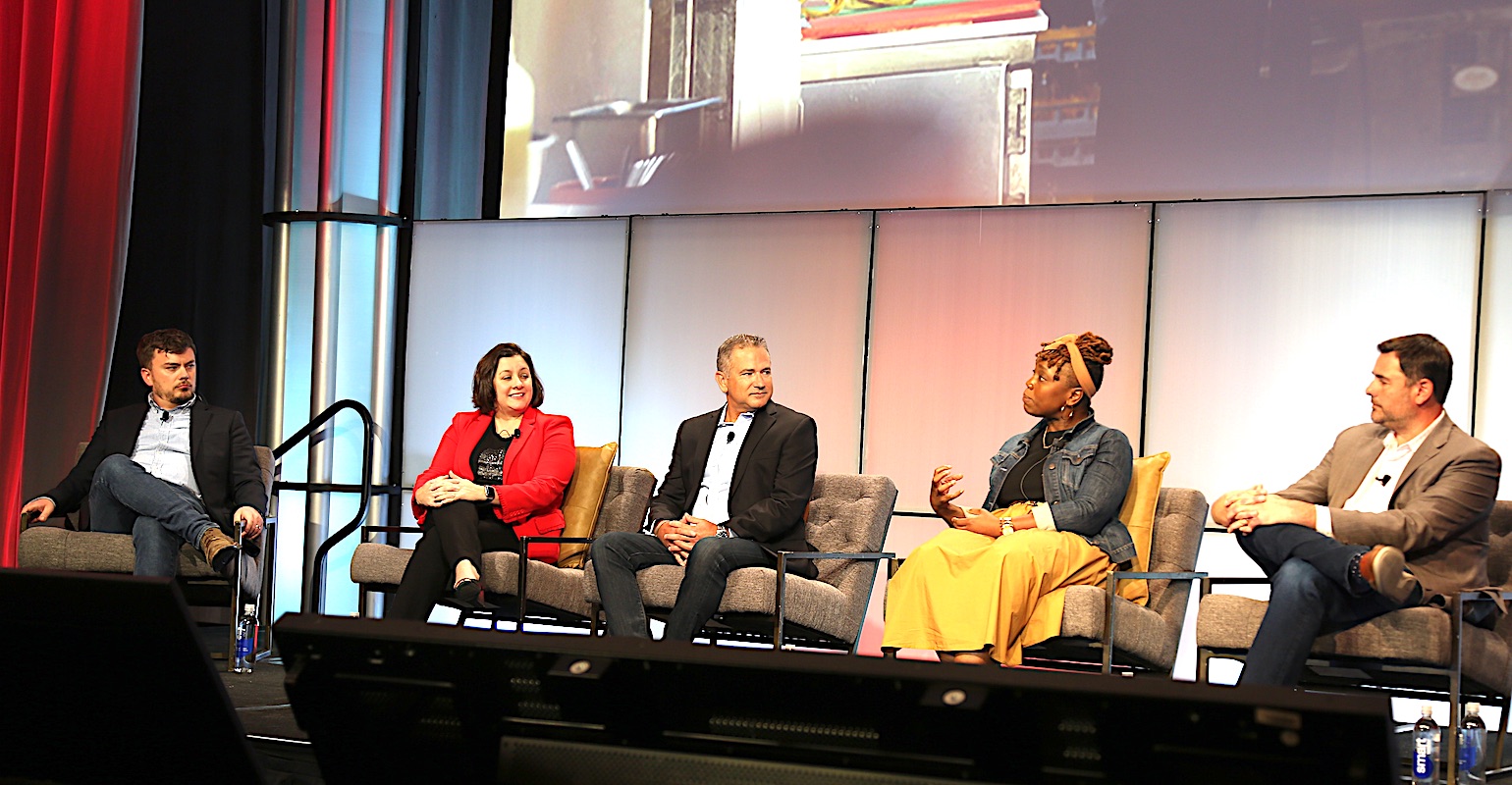
At the “Culture: Your Single Point of Difference” session at CREATE: the Future of Foodservice in Denver, Colorado on Monday, panelists said culture helps restaurants hire and retain employees.
Panelists include: Meredith Kagigal, Vice President of Foodservice Channel Strategy and Execution, The Coca-Cola Company, based in Atlanta. Hal Lawler, Chief Operating Officer of Smokey Bones, Inc., based in Aventura, Florida. And Idris Stover, Director of Diversity, Equity, Inclusion and Culture at New York-based Shake Shack, said: It was moderated by Sam Oches, Editor-in-Chief of The Nation’s Restaurant News.
Culture can be difficult to define, they said, but Stover provided a succinct explanation.
Employees “need to feel and touch our culture, because it’s how people act, behave and show up,” says Stover. “At Shake Shack, our culture is about providing the best experience for our guests, but more importantly, we care about our team.”
More than 2,800 employees have recently been promoted to new opportunities within the company at Shake Shack, Stover said, with some of them using the company’s Shift Up program to help train new managers. was
“We practice what we call enlightened hospitality,” Stover added. “Fundamentally, it’s about prioritizing the people who work in your organization. increase.”
Rohrer said Smokey Bones conducts annual surveys that measure the success of its culture by asking hourly workers pulse questions as they arrive at work.
In addition, since April 2020, Smokey Bones management has held virtual town hall meetings with company-wide managers every Thursday during the early weeks of the pandemic.
“We give you the latest in business,” Lawler explained. “We will provide feature updates. …and there will be a Q&A session at the end. ….We got so much information from leaders on the ground that we had to be able to respond in a meaningful way by breaking down communication barriers in establishing trust with them. I have to.”
Cagigal said Coca-Cola management strives to keep employees engaged every quarter, conducting pulse surveys on how employees feel about the world and cola culture. increase.
“We are very focused on listening to our employees and adjusting our practices accordingly,” she said.
Boennighausen said two years of growing concerns about COVID, as well as travel and other restrictions, have corroded the energy you feel when you walk into a restaurant, the best barometer of culture. Management must make an effort to communicate transparency, even vulnerability, he said.
Diversity and equity programs can help, Stover added.
“When we took a closer look at our workforce in 2020, when we looked at leadership rates on the ladder to the home office, we found that overall, 53% were women and 76% were people of color,” she said. I was. “We did the hard work of looking inside, set some, put down some pen paper, set some goals.”
Kagigal said the Coca-Cola team is also looking out for people with disabilities, creating an equity and accountability council made up of both employees and community representatives to bring diversity to the company. Advice.
Panelists said it reflected the need for communities to align with what workers want and need from their jobs.
Boennighausen said smartphones are an example of how young employees see their place in the community. They are the blue dots on the map, the world is centered around them, and Spotify allows them to personalize their music.
“Our lives are very personalized in every aspect,” he said of young employees and what they want from their work culture. “They want that kind of personal experience.”
Contact Ron Ruggless [email protected]
Follow him on Twitter. @RonRuggless
